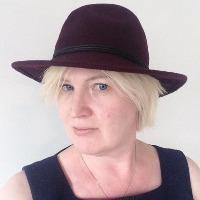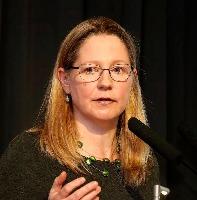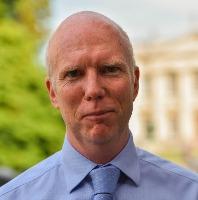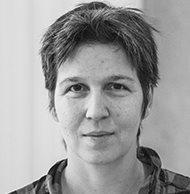Blog
Unless otherwise stated, content is shared under CC-BY-NC Licence
Developing a Digital Preservation Programme at the British Geological Survey
Jaana Pinnick is Research Data and Digital Preservation Manager for British Geological Survey
We started to develop digital preservation capabilities at BGS in 2016 by exploring the initial requirements and writing a preservation policy to guide the future work. This blog describes the progress we have made so far.
Background
BGS is an approved Place of Deposit under the Public Records Act and committed to looking after certain geoscience data in its care “in perpetuity”. Its National Geoscience Data Centre (NGDC) makes most of its data openly available under the Open Government Licence. BGS also has legal obligations to manage some types of data. The UKRI Data Policy requires data with acknowledged long-term value to be preserved and made available for future research; however, the NGDC considers the retention of most of its geoscience data to be longer than the ten years stipulated in the policy.
Spreading the Digital Preservation Word
Digital Preservation day offers our community a chance to shout from the rooftops that what we do is important for everyone. This day has given me recourse to consider my role in rooftop shouting and to reflect on how successful I have been in spreading the message about digital preservation.
My role at the University of Sussex is in both research data and digital preservation and I have a lot of opportunities to talk about digital preservation in both spheres. So I list here everything that I can remember over the past year where I've managed to talk about digital preservation with someone who hasn't been familiar with it before. What has been my reach this year? Here is my highly scientific presentation of my findings.
Normalising digital preservation
Elizabeth Oxborrow-Cowan is the Chair of the UNESCO Memory of the World Programme UK
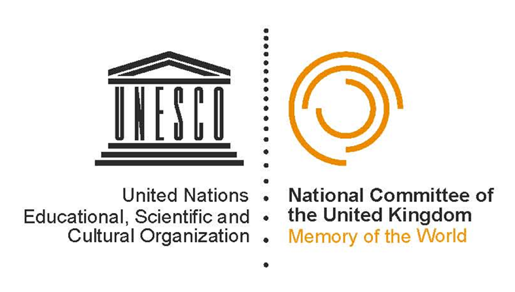 As any government minister will tell you from bitter experience, it is very hard to effect change and get things done. It requires a balance of different factors to come together to overcome obstacles, convince people of the need for change and encourage them to act to enable that change. Digital preservation is no different. As Kenney and McGovern neatly described in their ‘three-legged stool’ model, effective digital preservation requires three components – the provision of technology, resources and organisation. Organisation is important because it is about providing the managerial cultural and policy environment within which digital preservation is accepted as necessary and the working norm. UNESCO’s 2015 Recommendation on Documentary Heritage is one step in that process of normalisation.
As any government minister will tell you from bitter experience, it is very hard to effect change and get things done. It requires a balance of different factors to come together to overcome obstacles, convince people of the need for change and encourage them to act to enable that change. Digital preservation is no different. As Kenney and McGovern neatly described in their ‘three-legged stool’ model, effective digital preservation requires three components – the provision of technology, resources and organisation. Organisation is important because it is about providing the managerial cultural and policy environment within which digital preservation is accepted as necessary and the working norm. UNESCO’s 2015 Recommendation on Documentary Heritage is one step in that process of normalisation.
Preserving Poems. New challenges to archives and the digital creative process
Although the shift from paper to digital has been a major issue in the world of archives for several years, the delay in some disciplines between record creation and archive deposit has meant that, for many repositories, the challenge of processing born-digital archival material is a relatively new one. And although this development has prompted the creation of new practices, tools and methods of working, one constant has been the commitment that archives make to donors; to care for, preserve and where possible make available their valued content. Whether a filmmaker is handing over boxes full of 8mm film or hard drives worth of MP4 files an archivist must be able to confidently state that the material will be safe in their institution’s custody and that every effort will be made to afford access to researchers and the public as required. In the University Library the recent development of some of our research strengths within Special Collections has been prompted by the acquisition of collections which have enabled us to consider some of the unique questions surrounding digital archives, and to challenge ourselves to maintain these commitments as an archive.
Design, Deliver, Embed: Establishing Digital Transfer at the UK Parliamentary Archives
Chris Fryer is Senior Digital Archivist at the UK Parliamentary Archives
The Parliamentary Archives organises UK Parliament's memory. We are a shared service, providing an archives and records management service to the administrations of the House of Commons and House of Lords. We hold records of unique national importance, often defining watershed moments in the history of the United Kingdom (for example the UNESCO Memory of the World recognised Bill of Rights from 1689). Core procedural and administrative records safeguarded due to transfer of corporate digital records represent a continuation of this heritage.
The types of records produced internally are unique, providing valuable background and context for Parliament’s decisions and actions. With the end of the print-to-paper policy in Parliament in 2012 and the introduction of a corporate Electronic Document and Records Management System (EDRMS), the Parliamentary Archives has long recognised the need for a robust, end-to-end process for digital transfer directly from internal information systems.
Break up with legacy systems, there’s a new solution in town
Ben Saxton is Head of Sales at Formpipe Life Science
By 2020, 50% of all current applications in the data centre will be retired. In fact, between 2016 and 2020, IT organisations will decommission more than three times the number of applications they have previously since 2000. This has resulted in the need for organisations to retire existing applications and seek out a future-proof solution, and fast. What was once an afterthought, retaining business assets and developing a plan for maintaining future records, is now a business-critical task.
But, seeking out a reliable solution comes with its share of hurdles. As enterprises modernise their application portfolios, they face a growing challenge in finding cost-effective solutions to retire their current applications and retain access to historic data that has yet to be migrated to a replacement solution.
“Do You DP?”
Antonio G. Martinez is CEO & Founder of LIBNOVA and is based in Madrid, Spain
How many times have you heard this question? When it comes to Digital Preservation though, there’s no such thing as “to do or not to do”. Having worked with and advised all kinds of organisations, from the largest to the most compact, we’ve learnt that almost anything can be considered digital preservation. This means that “Do you DP?” is a hugely misleading question. A question that only allows for binary answers – a yes or a no, a 0 or a 1 – and makes the reply totally irrelevant to the truth. Understanding this key concept is essential for organisations to be able to move forward.
We have to take a step back and take in the full picture so we can then make others -colleagues and stakeholders- understand that there is so much depth to this relatively recent newcomer, digital, to the preservation world that it is not a simple yes or no, but a “What D.P. level shall we go?”. We have to share our vision and make them (colleagues and stakeholders) understand that we can digitally preserve things in so many different ways and on so many different levels that the simple question of “Do you D.P.?” renders the answer obsolete. You see, we all know that every little bit counts, and the more bits we actively layer our preservation cake with the more safely we preserve. But do our colleagues and stakeholders know this? We have to make the case that as we move up layers our digital assets are safer and safer. So the question should be, “Up to what level do we need to D.P.?”.
Archiving Crossrail
Alistair Goodall is Head of IT for Crossrail Ltd and Transport for London
Crossrail is an amazing project to be part of and, when the central section opens next year, visitors to London are going to see stunning new stations and travel on new 200 metre long trains capable of carrying up to 1,500 people.
My team in IT has been responsible for most of the enterprise wide applications which are needed on a mega-project. Some of these we have worked with the vendors over the last 10 years to develop and configure, others have been developed in house by our team to support specific business needs (such as vehicle movement planning and agreements). These applications now hold over 10 years of project data across all business areas including health and safety, commercial, delivery, programme controls and technical information.
PREMIS News & Highlights for 2018
Karin Bredenberg is Chair of the PREMIS Editorial Committee and she works for Riksarkivet/Swedish National Archives
It’s been a very productive year for the PREMIS Editorial Committee!
We’ve brought several projects to fruition and embarked on a number of new efforts since our last WDPD report on PREMIS and Linked Data. As you probably know, we released version 3.0 of the PREMIS Data Dictionary in 2015 and since then we’ve devoted a lot of our resources towards modelling and completing an OWL ontology, creating supporting documentation for the new ontology, and updating the related preservation vocabularies on LC’s Linked Data Service. We are proud to say these are all available now!
In Certification I believe or... Are we doing it YET AGAIN?
Yvonne Tunnat is Digital Preservation Project Manager at Leibniz Information Centre for Economics in Germany
“Are we doing it YET AGAIN?” is the question I would most certainly ask if I were not the one most likely to suggest that we go the next level of certification, or, interchangeably, for the more recent or updated version of a certain certification level.
We have gone through the Data Seal of Approval in 2015, have acquired the nestor Seal in 2017, and at the end of 2018 we will hand in our documentation for the Core Trust Seal. We would certainly have found found us another nice certification process in 2016, but as I was away for maternal leave for a great chunk of that year, we were too busy just archiving stuff.
So, why are we constantly heading for another certificate to prove how trustworthy our Digital Archive is?













































































































































